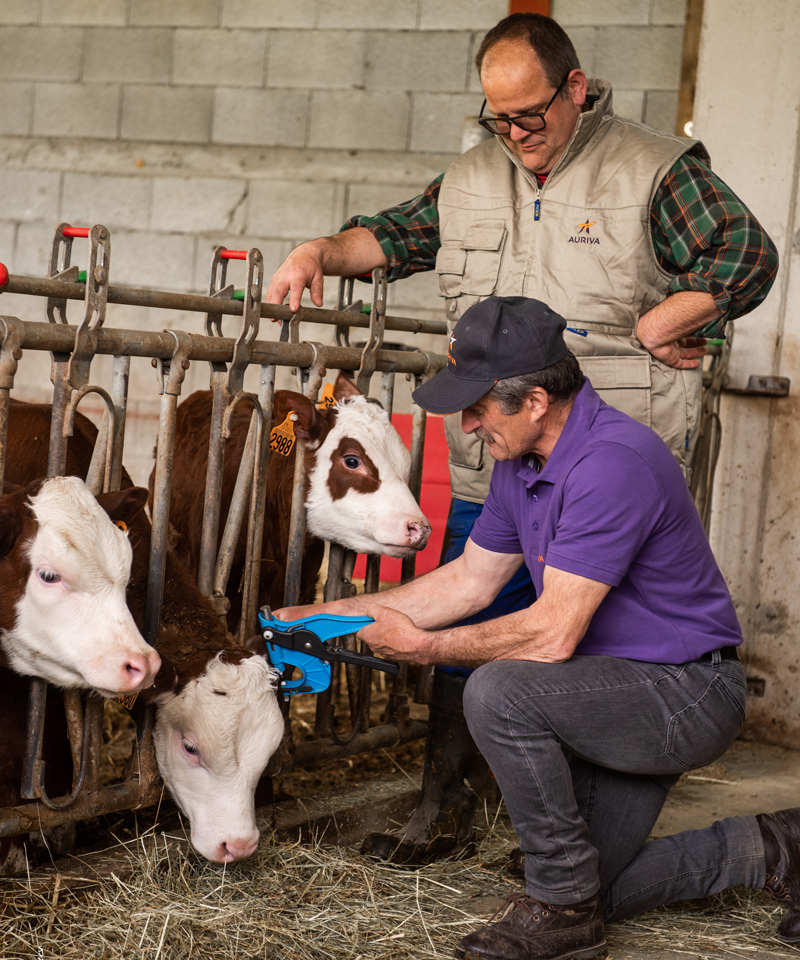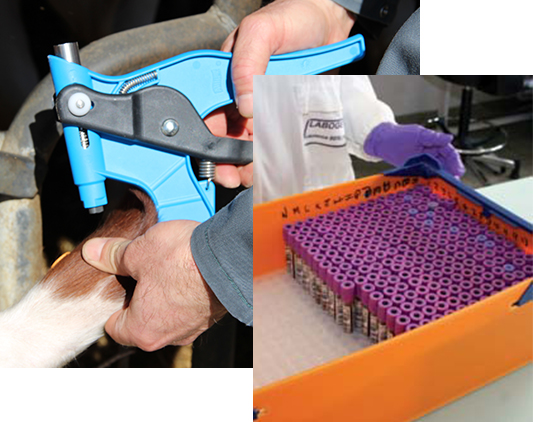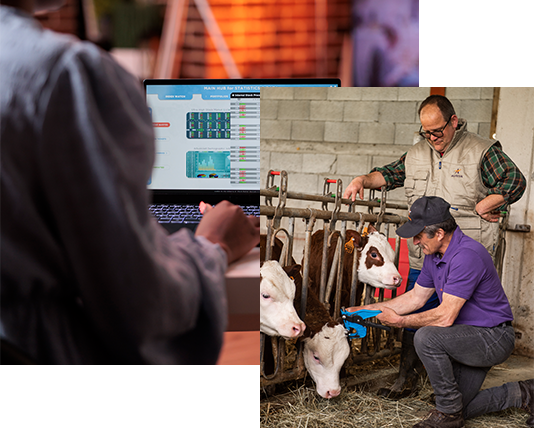EXPERTISE
Genotyping
With genotyping, you can anticipate the future and make decisions that are fully in line with your breeding strategy. Renewal, health, production, breeding… genotyping is a world-renowned, reliable solution for securing the genetic progress of your livestock.
As a major player in French genetics, AURIVA and its partner cooperatives offer you access to a turnkey genotyping service. Used to guide some of our selection programs, genotyping has been contributing to the emergence of high-level genetics for many years. Now available for your herds, this simple sampling will save you time when it comes to the future of your livestock.


AURIVA, the genotyping expert
- 5574 genotyping programs in fiscal year 21-22
- 27,414 genotypings carried out for breeders in fiscal year 21-22
- 1 integrated management in our R&D department
Access our genotyping services now

Suckler breeders
For all inquiries, please contact your insemination cooperative or our suckling genotyping department at: +33563825273 or ermeline.verchere@auriva-elevage.com

Dairy farmers
For any request, please contact your insemination cooperative or our dairy genotyping department at: 0472383870 or marion.peyrache@auriva-elevage.com
Evaluate the genetic potential of your herd or of certain individuals
Genotyping is a technique for analyzing animal genomes, providing an in-depth understanding of your herd’s genetic potential. By identifying early on the genetic markers that influence the characteristics of your animals, you can more easily guide your breeding and selection choices.
Knowing the genetic value of your females allows you to :
- Decide whether or not to breed them
- Controlling future renewal
- More effective mating
For males, and particularly for suckling genetics, you can :
- Eliminate males carrying genetic abnormalities
- Secure your filiations
- Identifying the males that carry high-quality genetics

Improve health and productivity for greater profitability
Production, feed efficiency, gestation period, morphology… by selecting the best females for your renewal program, you not only improve profitability in terms of finished product, but also production costs.
Useful for classifying your animals, genomic testing will enable you to select the most disease-resistant animals and eliminate those carrying abnormalities, thus improving the longevity of your herd and reducing your veterinary costs.
Coupled with the use of high-level AI genetics, genotyping is a highly cost-effective investment. It is one of the keys to the virtuous circle of progress and optimization of your herd.
Sexed seed and crossbreeding
Coupled with the use of sexed semen (female for renewal and male for crossing) and the YPERIOS terminal cross, genotyping will maximize its effects.
While the best heifers identified will be dedicated to renewal, cows and heifers of lower genetic level can be used to be inseminated with YPERIOS crossbreeding sires.
So you win on both counts!
Further information
What is marker-assisted selection, commonly known as genomics?
Marker Assisted Selection (MAS) is a selection method based on the detection, in the genome, of regions responsible for part of the variability of a trait, such as “milk production” for dairy breeds, or “conformation” for suckling breeds.
These regions are called Quantitative Trait Locus (QTL). A QTL is tracked from generation to generation using markers located in the same region of the genome, making it possible to predict the value of a sire (male or female). Thanks to Marker Assisted Selection, it is possible to evaluate an animal’s genetic value as early as the embryonic stage, by means of a puncture, or as early as birth, by means of a simple blood test or the removal of part of the ear cartilage.
Dairy and suckler breeds: reference population sizes that make all the difference
A reference population is made up of bulls genotyped and evaluated according to the performance of their offspring. It provides the basis for defining chromosomal regions of interest and calculating genetic effects. The larger the population, the better the index reliability. Thus, genomics has progressed more rapidly in dairy breeds with large numbers of animals, whereas suckler and dairy breeds with smaller numbers of animals have started or are starting more slowly on the road to using genomics.
